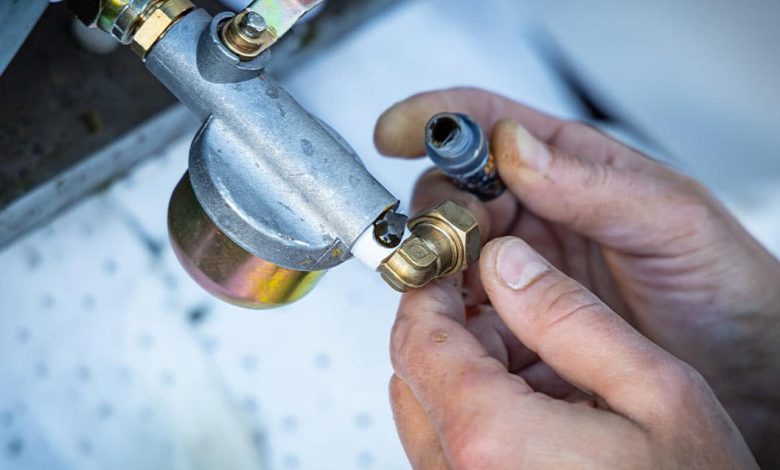Why Waiting to Replace an Oil Tank Always Costs More

The Miscalculation Most Property Owners Make
Aging oil tanks don’t send alerts when they approach the end of their lifespan. They sit quietly, doing their job, until corrosion, internal wear, or ground pressure finally catch up. Many property owners assume that as long as there’s no visible leak or interruption, the system can keep going. The problem isn’t just failure — it’s the financial consequences of waiting too long to take action.
Delaying replacement typically leads to secondary issues that multiply costs. Repairs, cleanup requirements, soil testing, and fuel system downtime quickly stack up. What could have been a controlled upgrade becomes a disruptive and expensive emergency. That’s why planning ahead matters more than most owners realize.
Understanding the long-term cost to replace oil tank systems starts with recognizing the difference between timing and reaction. The expense of a scheduled replacement is predictable. The expense of a failure-driven response rarely is.
How Aging Tanks Create Hidden Financial Burdens
The real cost of oil tank replacement doesn’t come from the installation itself — it comes from the consequences of postponement. A tank that has outlived its expected service life starts to deteriorate internally even if the exterior shows no signs of damage. Moisture buildup, pressure fluctuations, and natural corrosion all contribute to tank wall breakdown.
When a tank reaches that stage, the risk of leaks increases significantly. Leaks are rarely clean or contained. Even minor seepage can affect nearby soil or structural surfaces. Once contamination occurs, environmental testing, reporting, and remediation may be triggered.
Owners expecting a simple replacement often find themselves facing soil disposal charges, fuel recovery costs, environmental assessments, and long-term monitoring. In most cases, these additional burdens outweigh the original replacement expense.
Why Cleanup Costs Overwhelm Replacement Budgets
The financial impact of a tank failure goes far beyond physical repair. Cleanup requirements are heavily regulated and often mandatory once contamination reaches the subsurface. Soil must be tested, excavated, transported, and properly disposed of. In some cases, groundwater monitoring becomes necessary.
Insurance coverage doesn’t always apply. Many policies include clauses that exclude damage stemming from age-related failure or neglect. Owners who assumed coverage would respond often find themselves responsible for the entire cleanup effort.
Choosing to address replacement before failure avoids a scenario where costs grow beyond control. A tank change handled on schedule prevents disruptive contamination and eliminates the need for emergency site restoration.
The Role of Property Value and Transfer Readiness
Real estate transactions often bring hidden fuel system issues to the surface. Buyers, insurers, and lenders frequently request documentation about heating fuel or storage systems, especially if the property is older. When a tank has aged beyond a reasonable timeline, replacement becomes a negotiation point — and not in the seller’s favor.
Properties with outdated tanks tend to face:
- Delayed closing timelines
- Price reductions to offset risk
- Additional inspection requirements
- Soil testing or removal demands
In many cases, buyers insist on replacement before finalizing the transaction. Owners who proactively handle replacement avoid last-minute expenses and protect their negotiation power.
When Inspections Trigger Unplanned Action
Routine or required inspections often expose tank deterioration earlier than owners expect. Corrosion, thinning metal, or minor surface damage are indicators that the system is reaching the end of service life. Inspectors may recommend immediate replacement, especially if the tank is buried or located near structural areas.
Once issues are documented, deferring replacement becomes riskier. If the damage progresses, the owner may be held responsible for resulting environmental harm. That’s why a deliberate replacement timeline is financially safer than hoping the system lasts another season.
Around the midpoint of planning, owners often research options to understand the cost to replace oil tank systems before damage turns the process into a crisis. Evaluating the numbers early gives flexibility and control rather than forcing an unplanned expense.
Many property owners only explore the true cost to replace oil tank after a problem has already surfaced, rather than when replacement would have been preventive and affordable.
How Delays Impact Insurance and Compliance
Insurance companies assess risk based on system age and maintenance history. Tanks past typical service years are often considered liabilities, even if no problems have occurred. Some insurers limit coverage or increase rates when tanks reach certain age thresholds.
Regulatory compliance adds another layer. Local and state guidelines often require timely replacement once a tank reaches the end of its operational lifespan. Ignoring those expectations can lead to fines or mandated removal under compressed timelines.
By acting ahead of schedule, owners stay in control of timing, cost, and logistics instead of reacting to external pressure.
Comparing Planned Replacement to Emergency Response
The cost difference between proactive replacement and reactive cleanup is substantial. When owners schedule a tank replacement, they can coordinate fuel transfer, system downtime, and installation logistics with minimal disruption. It’s a defined project with a clear beginning and end.
When failure forces action, the timeline is unpredictable. Emergency excavation, fuel containment, contamination reporting, and structural protection create layers of cost that rarely align with budgets.
In most cases, waiting doesn’t save money — it multiplies the potential financial impact. Planning before problems arise prevents the chain reaction that typically follows leaks or failures.
The Long-Term Value of Predictable Upgrades
Replacing an aging fuel tank at the right time ensures continued system reliability and reduces exposure to unexpected costs. It also supports insurance eligibility, protects resale value, and helps maintain compliance.
Proactive owners treat replacement as part of the natural lifecycle of fuel and heating systems — not as a last-resort emergency. The longer a tank remains in service past its intended lifespan, the more likely it is that the eventual cost will be far higher than expected.




